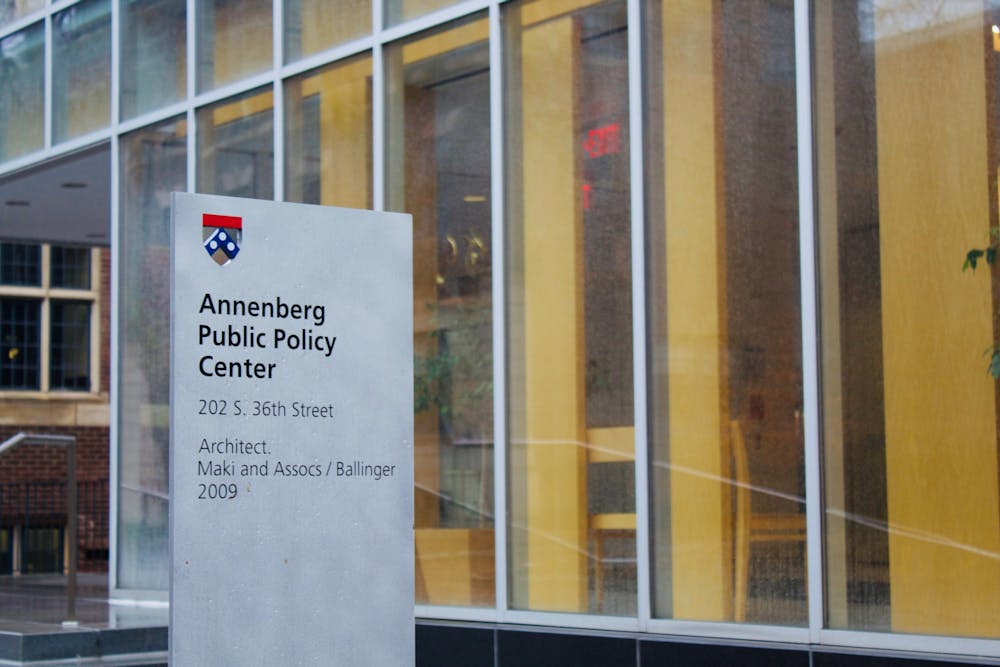
The Annenberg Public Policy Center found no correlation between ‘13 Reasons Why’ and an increase in suicide among adolescent boys.
Annenberg Public Policy Center Research Director Dan Romer published a study that found no correlation between the release of the Netflix show "13 Reasons Why" and an increase in suicide rates among adolescent boys, contrasting data from another study that went viral last April.
Romer published the paper, “Reanalysis of the Bridge et al. study of suicide following release of 13 Reasons Why,” in an online journal Jan. 16. The heavily-publicized 2019 study was conducted by Jeff Bridge, a prominent suicide researcher at Nationwide Children's Hospital in Columbus, Ohio. Bridge's study suggested that suicide rates in adolescent boys increased in the three months after the show’s release. In his analysis of Bridge's study, however, Romer found that the increase was fully accounted for by the nationwide uptick in adolescent suicide since the mid-2000s, and so the association with "13 Reasons Why" was a misattribution of the trend.
“There was no strong evidence, apart from the fact that there is an increase in [adolescent] suicide, that the show either increased or decreased [suicides],” Romer said.
Season one of "13 Reasons Why" depicts a high school girl who dies by suicide and leaves behind taped records of 13 reasons she chose to end her life. In the season’s final episode, the character’s suicide is shown on screen in graphic detail, which received backlash from suicide prevention advocates and viewers alike.
Netflix has retroactively edited the lead character's suicide scene from the episode, as well as added trigger warnings to the beginning of the series.
In a July 15 statement Netflix said, “We've heard from many young people that '13 Reasons Why' encouraged them to start conversations about difficult issues like depression and suicide and get help – often for the first time.”

"13 Reasons Why" was nominated in the Best Show category at the 2018 MTV TV & Movie Awards. (Photo by Nicole Alexander | CC BY 3.0)
According to Romer, there is “basically no evidence” of this for the first season. In a different 2019 study Romer conducted on the second season, however, he found that some adolescents were encouraged to seek mental health treatment by the show’s message, while others' mental health was negatively impacted.
“Some people got more suicidal by watching the second season and some people got better,” Romer said. “It was mainly people who were already vulnerable to suicidal messages and were going through things like depression which made them already vulnerable to contagion.”
Suicide contagion describes the phenomenon of exposure to suicide or suicidal behaviors, potentially through media, resulting in an increase in suicide or suicidal thoughts, Romer said.
“It’s really important to remember that suicide is a permanent solution to a temporary situation,” Chief Wellness Officer Benoit Dubé said. “The goal is always to remind those struggling of the temporary nature of their struggles and it is very, very hard to do this when there are these external reinforcements of this permanent solution.”
Dubé noted it is possible to use media to fight stigma around mental illness, but people may view this media differently depending on their state of mind.
“Different ears will hear different things,” Dubé said. “If we shield the more vulnerable ears from hearing and seeing these things in the media, are we reinforcing stigma?”
The executive director of Penn Benjamins and College junior Rachel Pak echoed Dubé. She added "13 Reasons Why" only shows one version of an experience with mental health and is not always “nuanced.”
“A show like ‘13 Reasons’ can also make people feel very separated from what is depression and what is anxiety because the depictions weren't very accurate," Pak said. "Depression and anxiety are so much more prevalent and so much less dramatic – [mental illness] is not always that obvious and can be much more subtly subversive, and you don’t see that in the show."
Romer’s next step will be to look at the number of adolescent suicides from the weeks directly before and after the first season’s release, instead of just comparing the months like in previous studies, in order to increase the accuracy of his findings.
“It’s not that we don’t believe in [suicide] contagion – we do – but if we’re going to try to understand how it works with these types of shows, we need to be careful before we jump to the conclusion that there is an effect,” Romer said.
The Daily Pennsylvanian is an independent, student-run newspaper. Please consider making a donation to support the coverage that shapes the University. Your generosity ensures a future of strong journalism at Penn.
Donate



